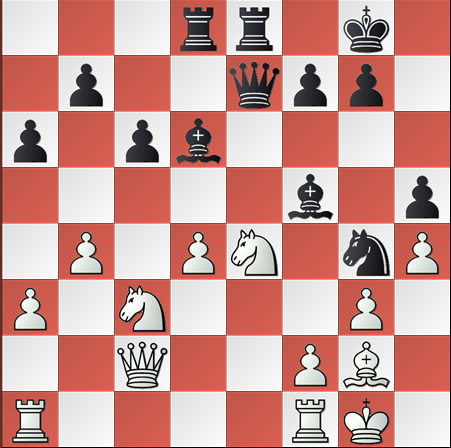In the game of chess, the most interesting and intriguing part is the middle game, in which both the players vie for positional control and shrewd tactics to gain an upper hand over the opponent. Typically, it is that part of the game where all the major and minor pieces are in the process of being deployed and or stationed in interesting squares as part of the attack and / or defense. The middle game also gains importance in that it is the stage where utmost calculation and concentration is required, and any wrong move or not a correct move might lead to losing control or giving an edge to the opponent.
In such cases, it might quite often happen that you might be caught in a dilemma as to which piece to move or how to go forward in the execution of tactics. This is possible, especially when most of your pieces are in favorable positions and having a tight leash on the opponent’s pieces while at the same time safeguarding your King and other pieces. It is in such times that the technique or trick of identifying your weakest piece among the active pieces comes to your assistance.
Let us try to explore this simple concept of identifying the weakest piece with the help of an interesting game played between two grandmasters in a European team Championship during 1999.
The position of the board after 20 moves by White is given below. It is the turn of black to move.

(Black to move)
A cursory look at the position of black’s pieces reveal that its major and minor pieces are fairly developed and exerting pressure on White. Also, there is not much scope for the black pawns to make any move that might turn out to be advantageous. He is presently caught in a dilemma as how to go forward with his next move. What is the option available to him now.
A second look of the major and minor pieces is warranted before any meaningful outcome regarding his next move. The light-squared bishop is acting as a pin for the White queen and making White’s Knight immovable without the White queen being moved to safety. The black knight at g4, having effective control over the f6 and h6 squares is taking care of the safety of the kingside. The two rooks are fairly centralized and the rook at e8 is providing additional support to the Queen at e7. This analysis reveals that the dark-squared black bishop is the one that can be considered for the next move. Zeroing on the dark-squared bishop also reveals that, but for its occupation of the d6 square, the rook at d8 might have captured the white pawn on d4. A critical analysis of this type will provide instant clues to make the most effective move. Also, the white king at g1 provides the clue that the diagonal a7-g1 might be explored for the dark-squared bishop, if he switches the angle. Black did the same and the game followed as follows:
| 20. | ,,,, | Bb8 | |
| 21. | Rad1 | Ba7 | White tried to protect the d4 pawn with additional support, but the damage had already been done and White might have to lose his pawn in d file. |
| 22. | d5 | …. | His futile attempt to protect his pawn in d file was thwarted. |
| 22. | …. | cxd5 | |
| 23. | Nxd5 | Rxd5 | |
| 24. | Rxd5 | Bxe4 | |
| 25. | Bxe4 | Qxe4 | |
| 26. | Qxe4 | Rxe4 | |
| 27. | Rd8+ | Kh7 | |
| 28. | Rd7 | Re2 |
White’s desperate attempts to salvage his pawn in d file or counterattack the Black king in anticipation o any mistake from Black proved futile, and Black, having deployed the idea of identifying the weakest link in an attack, emerged winner in this game.
This game highlights the fact that in addition to execution of shrewd tactics, one needs to be aware of the positional strengths and weaknesses of every piece in the board and make the optimal move at the appropriate time to gain control over the board and the opponent.


5 Comments
Wow! this post is simply awesome. I like to play chess and this will help me to improve my skill. Thanks
person who playing chess should analyse his present situation and what will happen in the next move.the planning should be proper.improper or unplanned move in chess leads to lost the game.here also same situation happened to the player.
Chess is my favourite game. I want to develop my skill on chess. This blog help me so quickly. Realy very nice blog.
When a man meets computer,he always think he is clever than it.But result is always bad.I learnt many tactics of chess but every time it failed against computer.Now i will use your tactics and will see result.Thanks for this post.
I love playing chess and this blog is helping me a lot to learn.
Trackbacks/Pingbacks